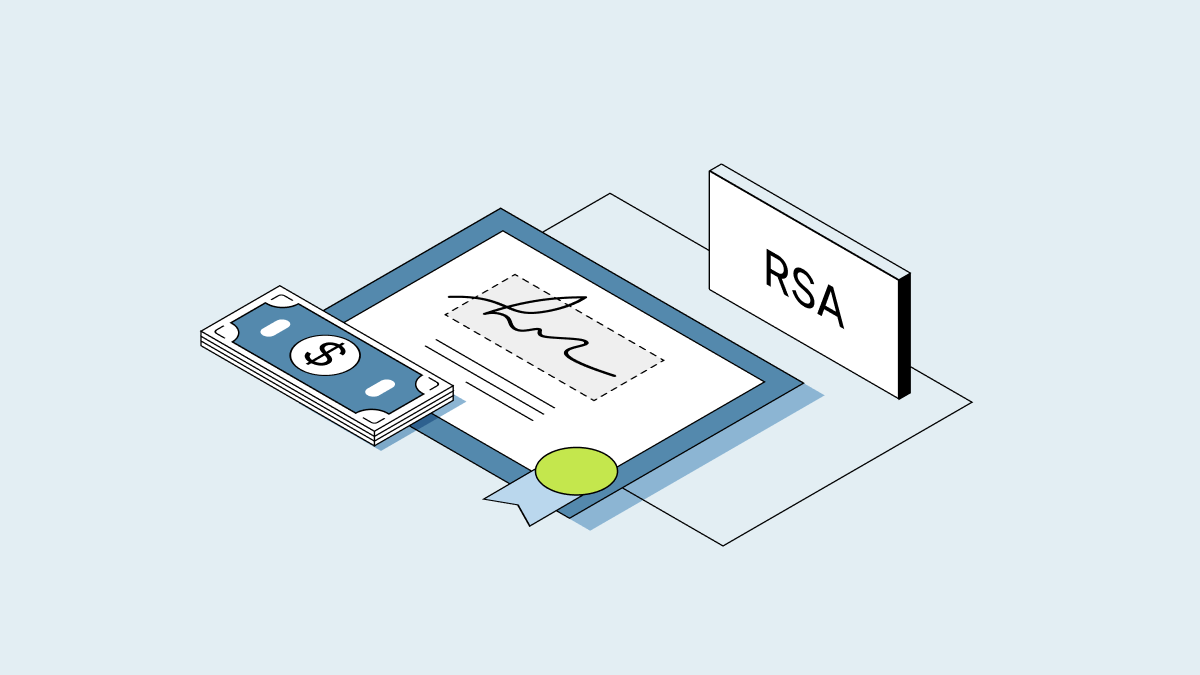Private secondary transactions give shareholders of private companies an opportunity to liquidate some or all of their shares. Liquidity can allow early investors to secure a return on their investment and gives employees the chance to cash in their equity compensation before an exit event, such as an initial public offering (IPO) or acquisition. Secondary transactions in venture capital-backed companies have given rise to their own market.
What is a secondary market?
A secondary market is any financial market where investors buy and sell securities (such as stocks or bonds) that have already been issued by a company.1 It’s “secondary” to a primary market, where securities are issued and sold directly by the company. In other words, when an initial purchaser of a stock from a company sells that security to another investor, the security transaction moves into a secondary market.
What is a secondary market transaction?
A secondary market transaction is when shareholders of a company sell their stock to another investor. A venture secondary transaction involves the sale of private stock in a company that is backed by venture capitalists. Employees are frequently among the shareholders at venture-backed companies.
Companies can allow venture secondary transactions at any time, but they often do so within 90 days of a primary funding round. Since companies usually self-impose a cap on the size of traditional venture rounds, secondaries can be a second chance to invest for those who were excluded or did not get their desired allocation in a recent capital raise.
How secondary markets compare to other financial markets
There are many types of secondary markets, which can be private or public. The largest of these is the public stock market.
The private secondary market vs. the public stock market
Most of what we refer to as “the stock market” is a secondary market for public equities, which operates through public exchanges like the New York Stock Exchange (NYSE) and the Nasdaq. These exchanges are secondary marketplaces where shares of public companies can be bought and sold by retail and institutional investors at prevailing market prices.
The secondary market for private stock is where investors can buy and sell shares of non-public companies. This private secondary market functions quite differently from the public stock market.
With no centralized market infrastructure, manually matching supply and demand in the secondary market comes with certain limitations not found in the stock market. Some of those limitations include:
-
Stock transfer restrictions
-
No past price transparency
-
Less efficient price discovery
-
Extended settlement cycles (two to four weeks, or more)
-
Higher administrative and operational burdens on companies
Transparency in the public market
Public secondary markets in the U.S. are often more transparent, which means the latest purchase price per share is visible to other market participants. Public companies must also disclose information about their earnings and finances. And the public secondary markets is generally more accessible; just about anyone can open a brokerage account and start buying shares in most public companies.
Stock in a public company might trade hundreds of times each day, making it easier for investors to discover current market prices and decide whether to sell their holdings for cash at those prices. Highly liquid markets in a stock can also allow buyers and sellers to trade on their own preferred timelines.
Less accessibility = less liquidity
Private secondary markets tend to be more opaque, less accessible, and less liquid than public markets. Historically, they have lacked the centralized infrastructure of exchanges like the NYSE, making it difficult for sellers to know if there is interest in buying and for buyers to know if there is interest in selling.
Trades occur less frequently, and the lack of a centralized marketplace and publicly required disclosures makes price discovery more difficult. While public secondary markets are accessible to most investors, the same isn’t true for private markets, which may be restricted to accredited investors who meet certain wealth or investment sophistication requirements.
Having fewer participants in a non-centralized secondary market makes it more difficult to manually match supply and demand. Despite these difficulties, the secondary market for private companies has grown significantly over the past decade.
The primary market vs. the secondary market
Both public and private companies can also sell securities through a primary market. The most commonly known primary markets for public companies include the IPO market and the market for newly issued corporate bonds. Many types of investors participate in these markets, including institutional investors—such as mutual funds, investment banks, sovereign wealth funds, and hedge funds—and high-net-worth individuals.
For private companies, a prominent primary market is the venture capital market, in which VC firms purchase newly issued equity from startups that are raising money for their business. Another primary market is the private equity market, in which investors buy larger equity stakes of newly issued stock in private companies, including full acquisitions.
Types of VC secondary transactions
Venture secondaries take many different forms. But they can be broken down into two major groups: structured liquidity programs and direct secondary sales.
Structured liquidity programs
Structured liquidity events are typically initiated by a company. Two types of company-initiated liquidity events are tender offers and auctions.
Tender offers
A tender offer allows multiple sellers (usually employees and early investors) to sell their shares to one or more groups of investors or back to the company at a predetermined price following a 20-business day period. Companies running tender offers have control over which buyers and sellers may participate and the price of the stock to be sold in the transaction. Tender offers have a more regulated process under Securities and Exchange Commission (SEC) provisions than other types of secondary transactions. While there is no legal definition for a tender offer, regulators have provided guidance on the various factors to take into account in evaluating whether a translation may qualify as one.
Auctions
An auction uses supply and demand dynamics to determine the price and volume in a secondary transaction. These transactions are typically organized by the company. Instead of using a predetermined price, potential buyers and sellers enter bids and offers for prices at which they would agree to transact. Often, a third-party market operator and secondary platform such as Carta can help determine a price that will best match supply and demand.
Direct secondary sales
A private secondary sale, also called a bilateral trade or direct secondary sale, is when one investor sells shares in a company directly to another investor in a deal that isn’t initiated or sponsored by the company. These trades can create issues for companies that like to control their cap table and equity ownership.
There are no standard disclosures for these transactions, and sometimes companies provide no information at all to potential buyers and sellers. The price is negotiated between the buyer and seller, rather than being determined by the company (as it is in a tender offer). This can lead to different implied valuations across different transactions. Companies sometimes try to prevent bilateral trades because secondary transactions have historically impacted 409A valuations.
Right of first refusal
To retain as much control as they can, companies and existing investors often have a right of first refusal (ROFR) in place. This gives them the option to purchase the stock before a shareholder is permitted to enter into a direct sale to other investors. Companies also sometimes place transfer restrictions on issued stock that allow them to block direct sales, unless first approved by them.
Other private market secondaries
There are several other secondary markets across the broader private market landscape, including fund secondaries, secondary buyouts, and GP-led secondaries. Each offers one of the various participants in the private market ecosystem a path to liquidity.
Fund secondaries
A fund secondary deal involves one limited partner (LP) selling its stake in a private fund to another LP, usually because the first LP wants liquidity before the fund is able to provide it.
Secondary buyouts
In a secondary buyout, one private equity firm sells its majority stake in a company to another firm. These deals have become increasingly common as the private equity industry expands and matures.
GP-led secondaries
In a GP-led secondary, one investment fund manager (also called a general partner) sells a stake in a company from one fund to a newer fund. Sometimes, the GP owns the second fund as well, in which case the transaction allows the GP to maintain control of high-performing assets while still providing liquidity to LPs that invested in the older fund. The market for GP-led secondaries has grown rapidly, expanding from $7 billion in 2015 to $62 billion in 2021.
A boom in venture secondaries
Between 2012 and 2021, the global market for venture secondary deals grew from $13 billion to $60 billion. This happened in part because the primary market for venture capital also grew: Over the same span, annual global venture investment rose from just over $50 billion to well north of $600 billion. This growth culminated in a record-setting 2021.
Although venture funding returned to Earth in 2022, deal activity remained well above other recent years. And venture capitalists and other private market investors are sitting on record amounts of dry powder.
The surge in primary VC fundraising has allowed companies to stay private for longer, because they can still raise ample cash without the full extent of the regulatory oversight and reporting requirements of the public market. As the timeline to a public exit stretches out, venture secondary transactions have emerged as a way for venture-backed companies to offer liquidity to early investors and employees while remaining private.
A new approach to venture secondaries
Carta has a suite of customizable liquidity solutions that range from structured company-sponsored transactions to one-off direct secondary sales.2
If you already use Carta to manage your cap table, you can easily integrate that cap table data into a secondary deal—speeding up the time to settlement and reducing your legal costs.
To learn more, request a demo of Carta Liquidity.




